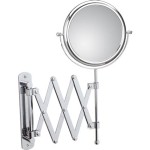Can I Do Screen Mirroring From Laptop to TV?
Screen mirroring, the ability to duplicate a laptop's display onto a larger television screen, offers a range of benefits for both personal and professional use. From enjoying family photos and videos on a bigger screen to delivering impactful presentations, screen mirroring provides a convenient and engaging viewing experience. This article explores the various methods available for mirroring a laptop screen to a TV, outlining the required hardware and software, and providing step-by-step instructions for each method.
Several technologies facilitate screen mirroring, each with its own strengths and limitations. These include wired connections using HDMI cables, and wireless technologies such as Miracast, AirPlay, and Chromecast. The best method depends on the specific hardware and operating systems of the laptop and television.
Wired Connection: HDMI
HDMI (High-Definition Multimedia Interface) cables offer a reliable and high-quality connection for screen mirroring. HDMI transmits both audio and video signals over a single cable, providing a simple and effective solution. Most modern laptops and televisions are equipped with HDMI ports, making this a widely accessible option.
To mirror a laptop screen to a TV using HDMI, simply connect one end of the HDMI cable to the laptop's HDMI port and the other end to the HDMI port on the television. Then, using the television's remote control, select the appropriate HDMI input source. The laptop's display should then be mirrored on the television screen. Some laptops may require adjusting display settings to optimize the output resolution and aspect ratio.
HDMI offers a stable connection with minimal latency, making it suitable for activities requiring precise timing, such as gaming or video editing. However, the physical cable limits mobility and requires the devices to be in close proximity.
Wireless Connection: Miracast
Miracast is a wireless technology that allows screen mirroring between devices that support the standard. It creates a direct Wi-Fi connection between the laptop and the television, eliminating the need for a physical cable. Many modern laptops, televisions, and streaming devices have built-in Miracast support.
To utilize Miracast, ensure both the laptop and television have the feature enabled. On the Windows laptop, open the Action Center and click "Project." Select "Connect to a wireless display," and choose the television from the list of available devices. The connection process may vary slightly depending on the television's manufacturer.
Miracast offers the convenience of a wireless connection but can be susceptible to interference from other Wi-Fi devices. The quality of the connection and the latency can also vary depending on the strength of the Wi-Fi signal.
Wireless Connection: AirPlay
AirPlay is Apple's proprietary wireless streaming technology, primarily designed for mirroring content from Apple devices such as Macs, iPhones, and iPads to Apple TV or compatible smart TVs. AirPlay offers seamless integration within the Apple ecosystem, allowing users to easily share their screens, photos, videos, and music.
To use AirPlay, ensure the Mac and Apple TV or AirPlay 2-compatible smart TV are on the same Wi-Fi network. Click the AirPlay icon in the menu bar on the Mac, and select the target device. The Mac's display will then be mirrored on the television. Users can also opt to extend the display, using the television as a second monitor.
AirPlay provides a smooth and intuitive experience for Apple users. However, its compatibility is limited to Apple devices and AirPlay-compatible televisions.
Wireless Connection: Chromecast
Chromecast, a device developed by Google, allows users to stream content from their laptops (and other devices) to their televisions. While not strictly screen mirroring in the same way as Miracast or AirPlay, Chromecast allows users to cast specific tabs in the Chrome web browser, or the entire desktop, to the television.
To cast a Chrome tab, click the three dots in the top right corner of the browser window and select "Cast." Choose the Chromecast device from the list of available devices. To cast the entire desktop, click "Sources" in the Cast dialog box and select "Cast desktop."
Chromecast provides a versatile and affordable solution for streaming content from a laptop to a television, utilizing the existing Wi-Fi network. However, like other wireless methods, it can be affected by network congestion and interference.
Choosing the Right Method
Selecting the appropriate method for screen mirroring depends on several factors, including the available hardware and operating systems, desired image quality, and the need for a wired or wireless connection. HDMI offers the most reliable and highest quality connection, while wireless options provide greater flexibility and convenience.
Understanding the capabilities of each method and considering the specific requirements of the task will allow users to choose the optimal solution for mirroring their laptop screen to their television.

Connecting Laptop To The Tv With Just A Few Simple Steps Resource Centre By Reliance Digital

How To Screen Mirror Stream Laptop Pc Tv Wireless No Adapters

Connecting Laptop To The Tv With Just A Few Simple Steps Resource Centre By Reliance Digital

How To Connect Your Laptop Screen Any Smart Tv Using Mirroring No Hdmi Needed

How To Easily Connect Your Laptop Tv Asurion

How To Mirror A Laptop Tv The Tech Edvocate

How To Cast Your Pc Tv Computer Screen Mirror Windows 10 Smart

Easiest Way To Connect Mac Sharp Tv Wireless Screen Mirror

Screen Mirroring A Phone Ipad Or Laptop To Tv How Push Your The Big

How To Screen Mirror Laptop Tv Samsung








